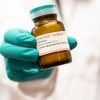Advertisement

Summary: Increased consumption of ultra-processed foods has been linked to more than 10% of all premature, preventable deaths.
Source: Elsevier
Ultra-processed foods (UPFs), ready-to-eat industrial formulations made with ingredients extracted from food or synthesized in laboratories, have gradually replaced traditional foods and meals made from fresh and minimally processed ingredients in many countries.
A new study in the American Journal of Preventive Medicine found that increased consumption of these foods was associated with more than 10% of all premature, preventable deaths in Brazil in 2019, even though Brazilians consume far fewer of these products than high-income countries.
“Previous modeling studies have estimated the health and economic burden of critical ingredients such as sodium, sugar and trans fats, as well as specific foods or beverages such as sugar-sweetened beverages,” explained lead researcher Eduardo AF Nilson, ScD, Center for Epidemiological Research in Nutrition and Health, University of São Paulo, and Oswaldo Cruz Foundation, Brazil.
“To our knowledge, no study has assessed the potential impact of UPFs on premature death. Knowing the deaths associated with eating these foods and modeling how changes in dietary habits can support more effective nutritional policies could prevent disease and premature death.”
dr Nilson and his colleagues modeled data from nationally representative dietary surveys to estimate baseline intake of UPFs by gender and age group. Using 2019 data, statistical analysis was used to estimate the proportion of total deaths attributed to UPF use and the effects of reducing UPF intake by 10%, 20%, and 50% in these age groups .
Across all age groups and gender groups, the consumption of UPFs was between 13% and 21% of the total food intake in Brazil in the period examined. In 2019, a total of 541,260 adults aged 30 to 69 died prematurely, 261,061 of them from preventable non-communicable diseases.
The model found that approximately 57,000 deaths that year were attributed to UPF use, accounting for 10.5% of all premature deaths and 21.8% of all deaths from preventable NCDs among adults aged 30 to 69.
The investigators suggested that in high-income countries like the United States, Canada, the United Kingdom and Australia, where UPFs account for more than half of total caloric intake, the estimated effect would be even higher.
dr Nilson noted that UPFs have steadily replaced consumption of traditional whole foods such as rice and beans in Brazil over time. Reducing consumption of UPFs and promoting healthier food choices may require multiple public health interventions and actions, such as:

A 10% to 50% reduction in UPF use could potentially prevent approximately 5,900 to 29,300 premature deaths in Brazil each year.
See also

“UPF consumption is associated with many disease outcomes such as obesity, cardiovascular disease, diabetes, some cancers and other diseases, and is a significant cause of preventable and premature death in Brazilian adults,” said Dr. Nilson.
“Even reducing UPF use to levels of ten years ago would reduce associated premature deaths by 21%. A policy that discourages the use of UPFs is urgently needed.”
A tool to estimate deaths attributed to the consumption of UPFs can help countries assess the burden of dietary changes associated with industrial food processing and design more effective food policy options to promote healthier food environments.
Examples of UPFs include prepackaged soups, sauces, frozen pizza, ready meals, hot dogs, sausage, sodas, ice cream, and store-bought cookies, cakes, candies, and donuts.
About this news from nutrition and mortality research
Author: press office
Source: Elsevier
Contact: Press Office – Elsevier
Picture: The image is in the public domain
Original research: The results appear in American Journal of Preventive Medicine

